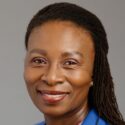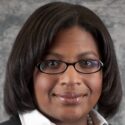Melvin B. Tolson Jr. (1923-2011)
 Melvin B. Tolson Jr., the first African American to earn a master’s degree at Oklahoma State University and the first full-time African-American faculty member at the University of Oklahoma, has died at the age of 88.
Melvin B. Tolson Jr., the first African American to earn a master’s degree at Oklahoma State University and the first full-time African-American faculty member at the University of Oklahoma, has died at the age of 88.
Tolson was the son of Melvin B. Tolson Sr., the faculty adviser of the all-black debate team at Wiley College in Texas. Denzel Washington played the elder Tolson in the movie, The Great Debaters.
Tolson Jr. graduated from Wiley College in 1940. After earning his master’s degree at Oklahoma State in 1950 he entered the doctoral program at the University of Oklahoma in 1957 and was hired to teach French two years later. He taught at the university for 31 years.
Richard David Morrison (1908-2011)
 Richard David Morrison, former president of historically black Alabama A&M University, died late last month at the age of 103.
Richard David Morrison, former president of historically black Alabama A&M University, died late last month at the age of 103.
Morrison was a 1931 graduate of Tuskegee University. He then joined the faculty at Alabama A&M and chaired the agricultural department there for 25 years. He took leave to earn a master’s degree at Cornell University and a doctorate at Michigan State University.
Dr. Morrison was named president of Alabama A&M in 1962. He served in that capacity for 22 years. He was the author of The History of Alabama A&M University and the autobiographical Walking in the Wilderness.
Oscar A. Rogers Jr. (1929-2011)
 Oscar A. Rogers Jr. the seventh president of historically black Claflin University in Orangeburg, South Carolina, died late last month at a hospital in Jackson, Mississippi. He was 82 years old.
Oscar A. Rogers Jr. the seventh president of historically black Claflin University in Orangeburg, South Carolina, died late last month at a hospital in Jackson, Mississippi. He was 82 years old.
Rogers was a native of Natchez, Mississippi. He was a graduate of Tougaloo College. He earned a second bachelor’s degree at Harvard Divinity School and later was awarded a master’s degree from Harvard University and an educational doctorate from the University of Arkansas.
Prior to being named president of Claflin in 1984, he served for nearly a quarter century as a professor and dean at Jackson State University in Mississippi. Dr. Rogers served as Claflin president until 1994. During his tenure, enrollments increased by 50 percent and he was instrumental in strengthening the university’s financial stability.











